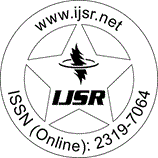Downloads: 2 | Views: 156 | Weekly Hits: ⮙1 | Monthly Hits: ⮙1
Case Studies | General Surgery | India | Volume 13 Issue 11, November 2024 | Popularity: 4.9 / 10
A Case of Type IV Hilar Cholangiocarcinoma
Dr. B. Santhi, Dr. M. V. Krishna Raj
Abstract: Cholangiocarcinoma is an aggressive malignancy of biliary epithelium that may arise anywhere in the biliary tract, from the intrahepatic biliary canaliculi to the terminus where the common bile duct enters the duodenum at the duodenal ampulla. Cholangiocarcinoma?s comprise about 3% of gastrointestinal malignancies, are the second most common primary liver tumours, and account for approximately 10% to 15% of all hepatobiliary malignancies. The incidence of intrahepatic cholangiocarcinoma has been rising, possibly due to improved diagnostic and classification techniques, while the incidence of extrahepatic lesions has been falling in recent years Cholangiocarcinoma is classified by anatomical origin as intrahepatic cholangiocarcinoma or extrahepatic cholangiocarcinoma, which is subdivided into perihilar cholangiocarcinoma and distal cholangiocarcinoma. More than 95% of cholangiocarcinoma?s are adenocarcinomas. The radiologic evaluation includes a right upper quadrant ultrasound examination, which may show intrahepatic biliary ductal dilation but does not usually identify the actual site of obstruction. With hilar cholangiocarcinoma?s, the gallbladder and visualized extrahepatic biliary tree are usually decompressed, whereas distal lesions will have extrahepatic biliary ductal dilation and gallbladder distention. Typically, computed tomography alone is insufficient for the assessment of appropriateness of resection. Other imaging methods include percutaneous transhepatic cholangiography, ERCP and MRCP. While surgery is the only cure, radiation, chemotherapy, and targeted therapy can also be used in conjunction with surgery. All patients with suspected or confirmed cholangiocarcinoma should be evaluated for distant metastasis; almost 75% of patients have nonresectable or metastatic disease at presentation.
Keywords: Cholangiocarcinoma, malignancy, ultrasound, computed tomography, percutaneous transhepatic cholangiography, metastasis
Edition: Volume 13 Issue 11, November 2024
Pages: 1275 - 1278
DOI: https://www.doi.org/10.21275/SR241119212404
Please Disable the Pop-Up Blocker of Web Browser
Verification Code will appear in 2 Seconds ... Wait
